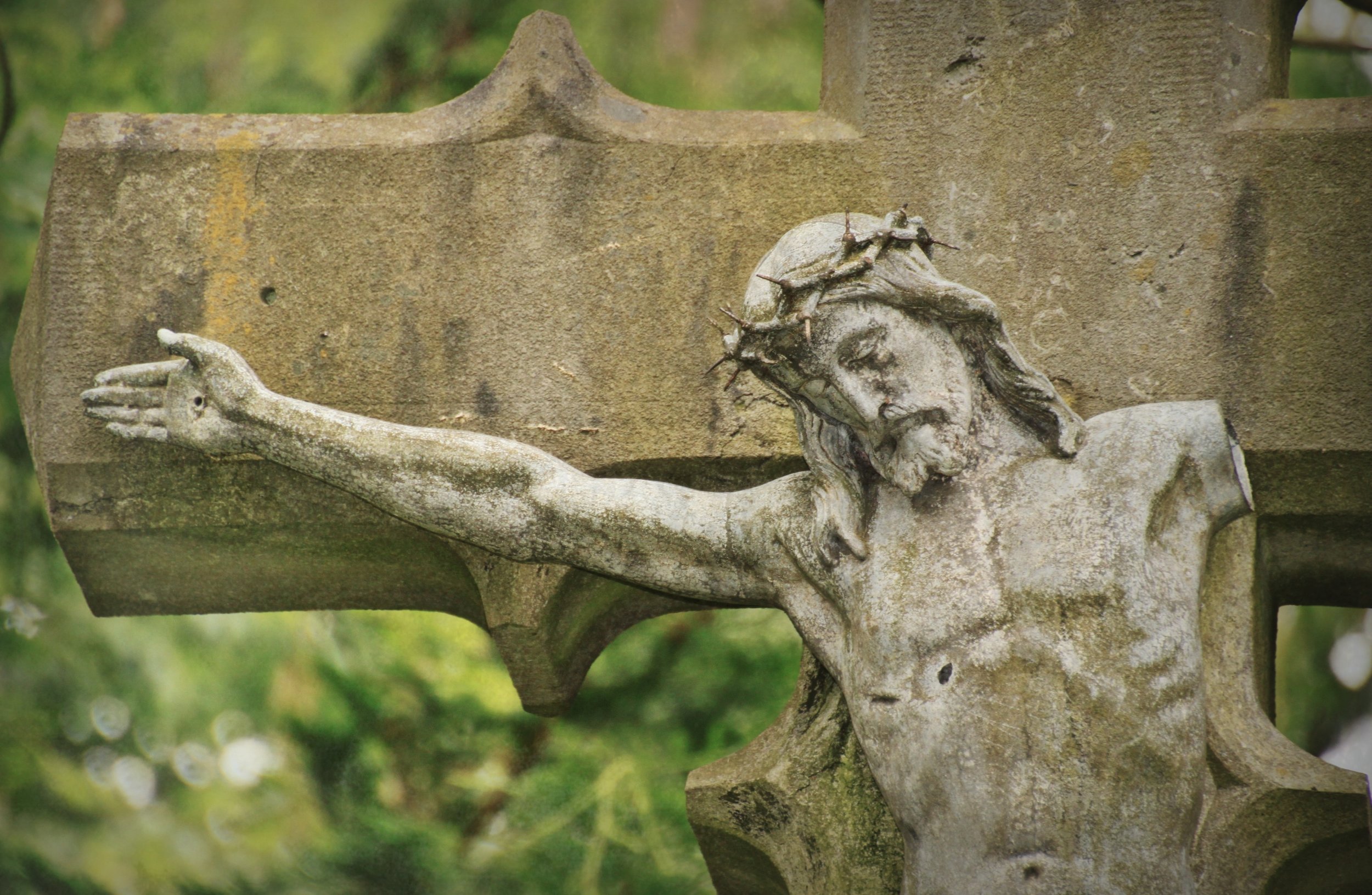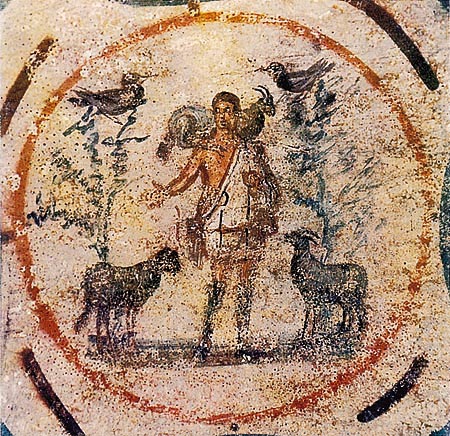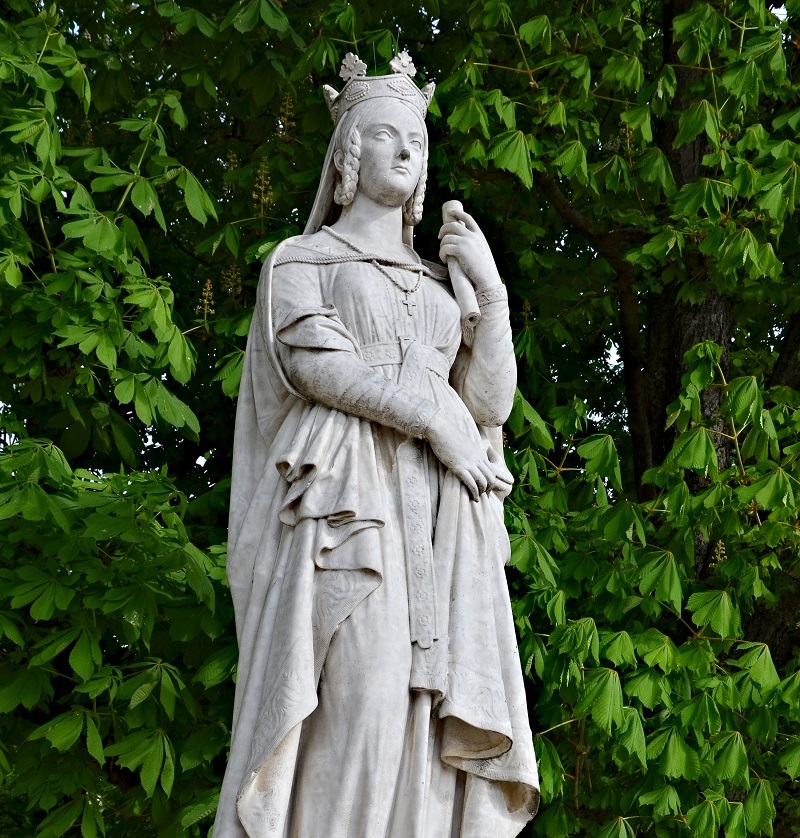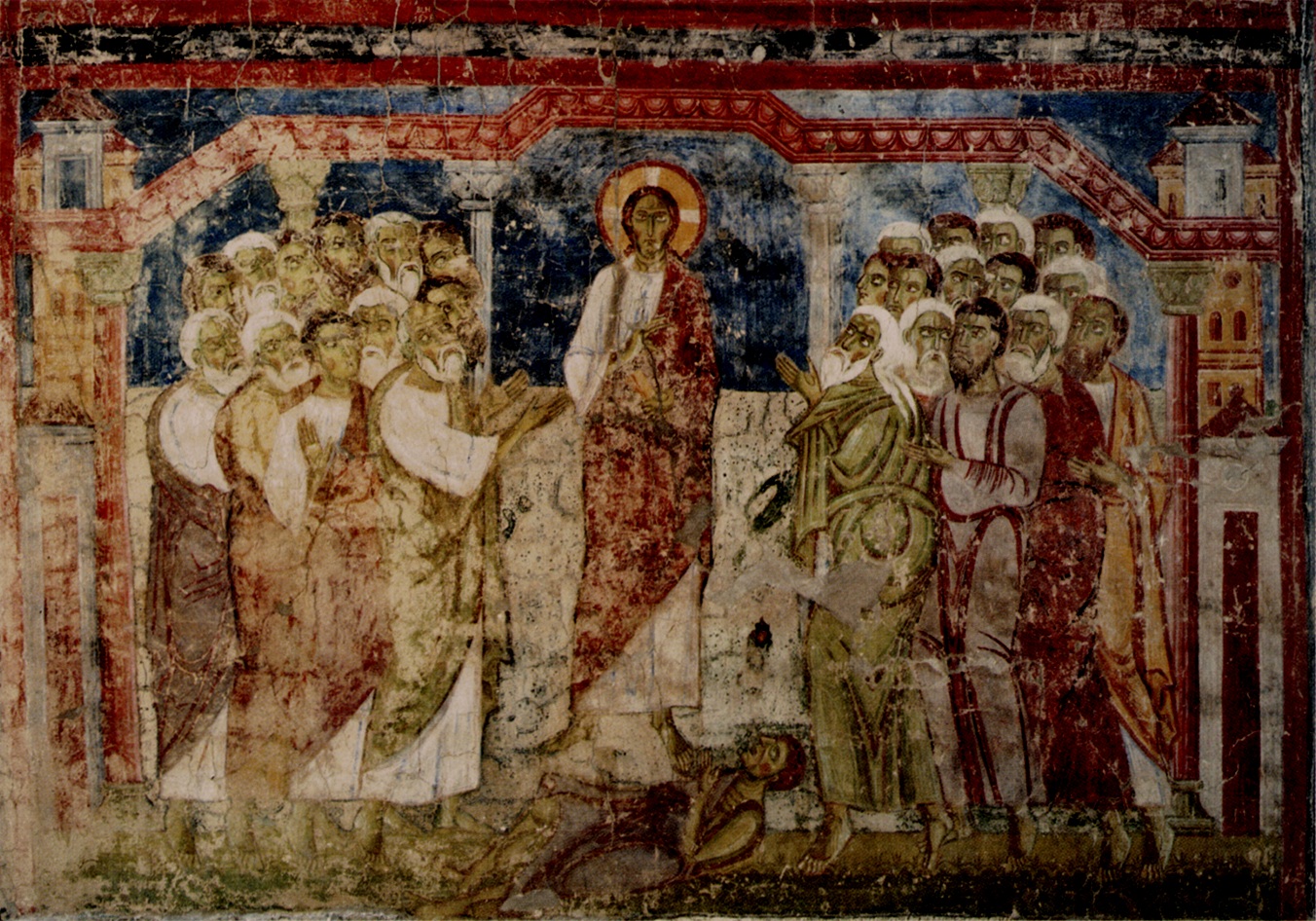Healing Atonement
101
Why Care? Practical Implications
Photograph: Photo credit: Nicepic & Pixabay | Public Domain.
Start Here
To listen to a helpful podcast, check out Beyond Penal Substitution on the Almost Heretical podcast when Mako discussed atonement.
101: Lesson - Read Definitions
-
What is the Bible about? What are we supposed to get out of reading it? Sometimes it gets treated like a list of rules about what Christians should and shouldn’t do, and while there is some of that, it’s only a small part. Most of the Bible is a story–a grand narrative about God’s relationship with humans. It starts with the beginning of our time here on Earth, where the first humans lived in harmony with God, each other, and the world around them, and ends with a vision for the future where everything will be made right again.
Atonement
But why does everything need to be made right again? If everything started out good, what went wrong? And if everything ends up good, how does it get fixed? What happened in the middle of the story? These are the questions that theories of Atonement try to answer. If we break down “atonement” into its syllables, at-one-ment, we can get a good idea of what the word means for Christians: at some point, the relationship between God and humans was damaged, and Atonement is about how that damage gets repaired.
Implications
These questions lead to others that get at the heart of the Christian faith. What is God like? How does he feel towards us? Why did Jesus become human? What was the purpose of his death and resurrection? What does God want us to do in response? Different theories of atonement have different answers to these questions, and our answers inform how we live our lives, how we share our faith with others, how we think about ourselves and our own relationship with God, and so much more. Our theory of atonement is the foundation for the rest of our thinking about our faith, so it is worth investigating to find the best answers that we can.
-
Part of the Anastasis Center’s mission is to proclaim the healing atonement of Jesus (sometimes referred to as “Medical Substitution”). What do we mean by that?
Jesus shared in our fallen human nature so that we could share in his healed human nature.
Human evil and immorality are bad, but they are symptoms of a deeper problem: a disease in human nature that messes up our desires and leads us towards wrongdoing. Any lasting attempt to defeat evil, bring justice into the world, and restore humans back into right relationship with God must deal with that root cause by first healing human nature. And that’s exactly what God has done through Jesus. Scripture tells a rich story about this.
-
A short version of the Bible’s story through the lens of healing atonement would be something like this:
God made humans to be in perfect relationship with Him, each other, and the rest of Creation. But humans damaged those relationships and corrupted human nature with a sin-disease, which became the primary cause of evil and suffering in the world. God partnered with a group of people — ancient Israel — to help them diagnose the sickness and try out a cure. But over time, it became apparent to them that they could not fully heal themselves. So God became human as Jesus, taking on our diseased human nature to heal it as one of us. In his life, he battled against the sickness, and through his death on the cross, he dealt the finishing blow. He rose from the dead with a fully healed human nature, and he offers that healing to us through relationship with Him. The Christian mission is to partner with Jesus to spread his healing and restoration throughout the world. One day, Jesus will return to fully restore Creation and defeat evil.
To illustrate the Bible’s story in the Healing Atonement framework, we use the Five C’s: Creation, Corruption, Clinic, Cure, and Completion. For each of these Five C’s, you can find additional resources to explore below.
-
God created humans in his image, meaning they were supposed to be his representatives on Earth, helping to carry out his plans for the world, so that the rest of God’s Creation could see him through them. Humans were tasked with creating new life, bringing order to the natural world, and ruling over Earth with God’s love and justice. This would have put each human in right relationship with God, each other, and the rest of Creation.
Read more: The Five C’s: Creation
Additional Resources
Bible Study: God, Humanity, and the Original Creation (Genesis 1:1-2:3)
Bible Study: Human Beings Bearing the Image of God (Genesis 2:4-25)
Message (transcript): How Our Choices Shape Our Desires
-
The first people distrusted God and wanted to define good and evil for themselves. This caused a sin-sickness to infect their human nature. This diseased nature became the root cause of human evil in the world, which led to damage in humans’ relationships with God, each other, and the rest of Creation. This damage from the human side of relationships makes it harder for all humans to know God and to carry out his will for us.
Read more:
The Five C’s: Corruption, Part 1: The Disease in Human Nature
The Five C’s: Corruption, Part 2: Exile and Damaged Relationships
Additional Resources:
Bible Study: Temptation and the Fall into Corruption (Genesis 3:1-7)
Bible Study: The Fall’s Consequences; God’s Redemption Begins (Genesis 3:8-19)
Bible Study: Human Nature Can Be Corrupted Further (Genesis 4:1-16)
Bible Study: Walling Yourself Off and Taking Others With You (Genesis 4:16-26)
-
God wanted to see humans restored, but most turned their back on him, refusing to acknowledge their sickness and addiction to sin or looking for other ways to manage it. Fortunately, some people responded to his invitation toward healing (ancient Israel), and he gave them a challenging health regimen (the Old Testament Law) to help diagnose their sin-sickness and try out a cure. It partially worked, and they were able to see the goodness and wisdom of God and his commands. But even with support accommodations, such as land, leaders, prophets, and protection, it became clear to the Israelites that it was impossible for them to perfectly follow the health regimen. Someone truly special was needed to bring human nature back to full health.
Read more:
The Five C's: Clinic, Part 1: A New Family
The Five C's: Clinic, Part 2: A New Promise
The Five C's: Clinic, Part 3: A New Garden
Additional Resources:
-
The solution was for the doctor to become the patient and work out a cure in himself. In Jesus Christ, God became human and took on our diseased human nature as one of the Israelites. With his life, he perfectly followed the health regimen, pressing God’s love into every part of his humanity. Like a blacksmith’s hammer and flame work to remove impurities from metal, Jesus’s obedience and love worked to remove the corruption from his human nature. This process ended with Jesus’s death, where the disease was cut away for good. Jesus rose from the dead with a fully healed human nature that was back in harmony with God and Creation. And he offers us the same healing and restoration through a relationship with him.
Read more:
The Five C's: Cure, Part 1: Jesus Retells David's Story in Matthew
The Five C's: Cure, Part 2: Jesus Retells Israel's Story in Luke
The Five C's: Cure, Part 3: Jesus Retells God's Story in John
Additional Resources:
-
God’s desire for the world is that our healing would be complete, relationships would be fully restored, evil would cease, and all wrongs would be made right again. Our mission as Christians is to partner with God to aid in his work towards those goals, as he has been doing from the beginning. This includes sharing Jesus’s story with others and growing in our relationship with him, but it also includes things like working towards environmental sustainability, caring for and supporting family, neighbors, and others in the global community, rooting out sources of violence, oppression, and suffering in the world, and much more. One day, Jesus will return, and complete his process of the restoration of all things in the New Heaven and New Earth.
Read more:
Implications of Atonement Theories
We compare this understanding to the dominant understanding in the Lutheran-Calvinist-Arminian traditions, which is called “Penal Substitution.” If you are just learning about the significance of this difference, please check out the resources below.
The Work of The Anástasis Center
We seek to help people experience Jesus by understanding God’s restorative justice and Jesus’ healing of human nature.
We write on the Bible and Hot Topics for people to use for their personal enrichment, day-to-day life, and ministry.
We design tools for evangelism, pastors and preachers, spiritual directors, counselors, and missionaries who seek to engage other cultures and belief systems.
We apply Christian ethics for US citizens, policymakers, and educators to engage the public square.
We recover insights from the early Christians to help Christians understand the tradition of Early and Eastern Christianity.
We engage with art and storytelling as well, for example in the next two video clips. If you are familiar with either Tolkien’s The Lord of the Rings or Marvel’s Black Panther, you might enjoy these videos and appreciate how we relate them to Jesus.
Exploring the Atonement Using Art and Theology
The Hero’s Journey and the Defeat of Evil as Atonement and Salvation
This video is part 7 of our series on The Theology of J.R.R. Tolkien’s The Lord of the Rings. It offers us as an illustration of a healing atonement. The hero’s journey is a successful retelling of the past stories of tragic heroes. The hero’s resistance to external evil and defeat of internal evil is atonement and salvation. Just as Gandalf retold Saruman’s story, Aragorn retold Isildur’s story, and Frodo retold Smeagol’s story (almost), Jesus retold Israel’s story, David’s story, and Adam and Eve’s story. He had to: they set up the conditions of sin-sickened humanity, exile, and conflict that we all inherit and must struggle against.
Our video series, The Theology of J.R.R. Tolkien’s The Lord of the Rings, is found on our Arts and Theology page and our YouTube channel, where we put brief descriptions of each video. It’s a great way to engage people who have an appreciation for the stories. Each video has questions for group discussion and/or personal reflection.
This video is part 4 of our series on The Theology of Marvel Studio’s Black Panther, which offers us an illustration of a healing atonement. We discuss the parallels to Jesus, where T’Challa’s descent and ascent is rooted in his willingness to suffer again, for others, and even to honor others. That is unlike Killmonger’s refusal to suffer again. T’Challa is therefore a Christ-figure, in the framework of resisting the lure of Empire, and wanting to wisely share the gift from above. Jesus’ determination to lead his people to give to the world the gift from above — the Spirit of God — was the only real option for Israel and the good Creator God who called Israel into partnership.
Our video series, The Theology of Marvel’s Black Panther, is found on our Arts and Theology page and our YouTube channel, where we put brief descriptions of each video. It’s a great way to engage people who have an appreciation for the movies, especially if they are also activists at heart, and wonder why we firmly argue that Christian faith is not a “white man’s religion.” Dr. Vince Bantu, Assistant Professor of Church History at Fuller Seminary and Founder-Director of the Meachum School of Haymanot, joins Mako Nagasawa to appreciate Marvel's Black Panther.
Check Out Atonement 201
See the Atonement 201 page for more depth and application of how we live this out and teach.
We hope to foster and support a broad network of people who are interested in growing in Christ this way. Check out our Facebook group.



